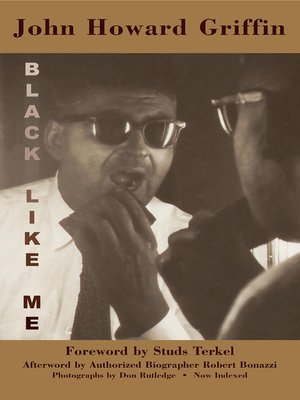

In October 1961, Black Like Me was published, to wide acclaim. Any day now, Griffin heard, a mob would come to castrate him." After sending his family to Mexico for their safety, he joined them and "turned his Sepia articles into Black Like Me. Returning to his Texas hometown, he was hanged in effigy his parents received threats on his life. He was subjected to what he called 'a dirty bath' of hatred. In interviews with Time and CBS, he explained what he'd been up to without trying to insult Southern whites. His chilling record of the experience, Black Like Me, "told white Americans what they had long refused to believe… Before Griffin could publish reports on his experiment in Sepia magazine, which had helped bankroll his travels, word leaked out. In 1959 Griffin, a white writer, darkened his skin to prepare for a journey across the South disguised as an African American. Octavo, original white cloth, original dust jacket.įirst edition of a "piercing and memorable" account of racism in America by white writer John Howard Griffin, his record of traveling across the South in 1959 disguised as an African American, in the elusive original dust jacket. AN "ESSENTIAL DOCUMENT OF CONTEMPORARY AMERICAN LIFE": FIRST EDITION OF JOHN HOWARD GRIFFIN'S BLACK LIKE ME, 1961


 0 kommentar(er)
0 kommentar(er)
